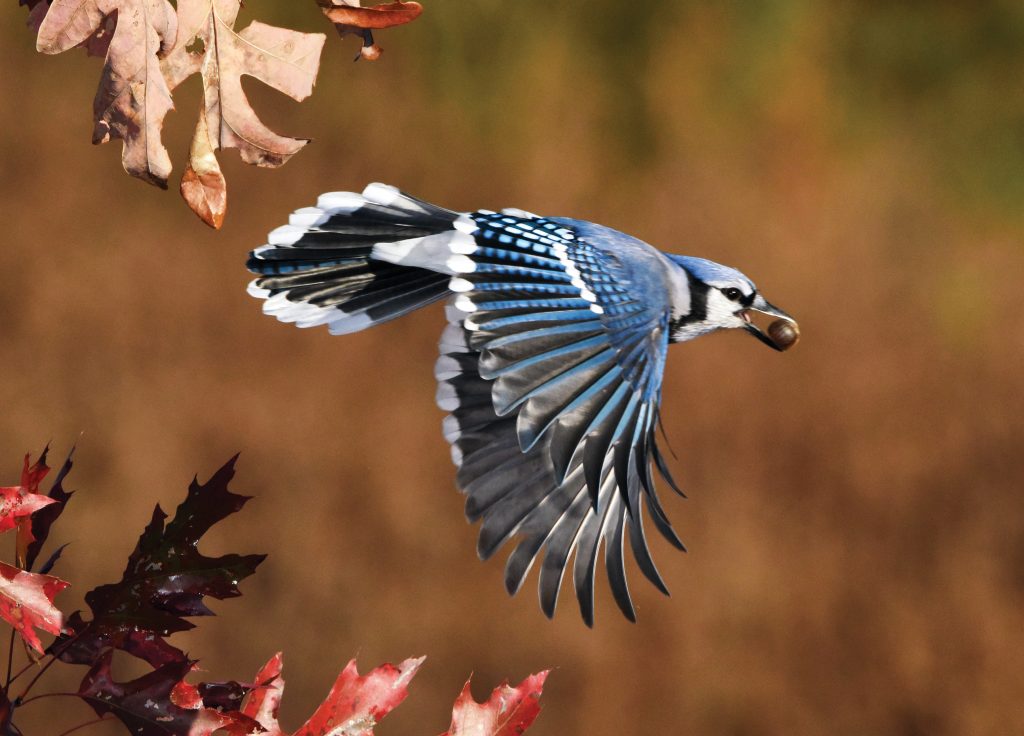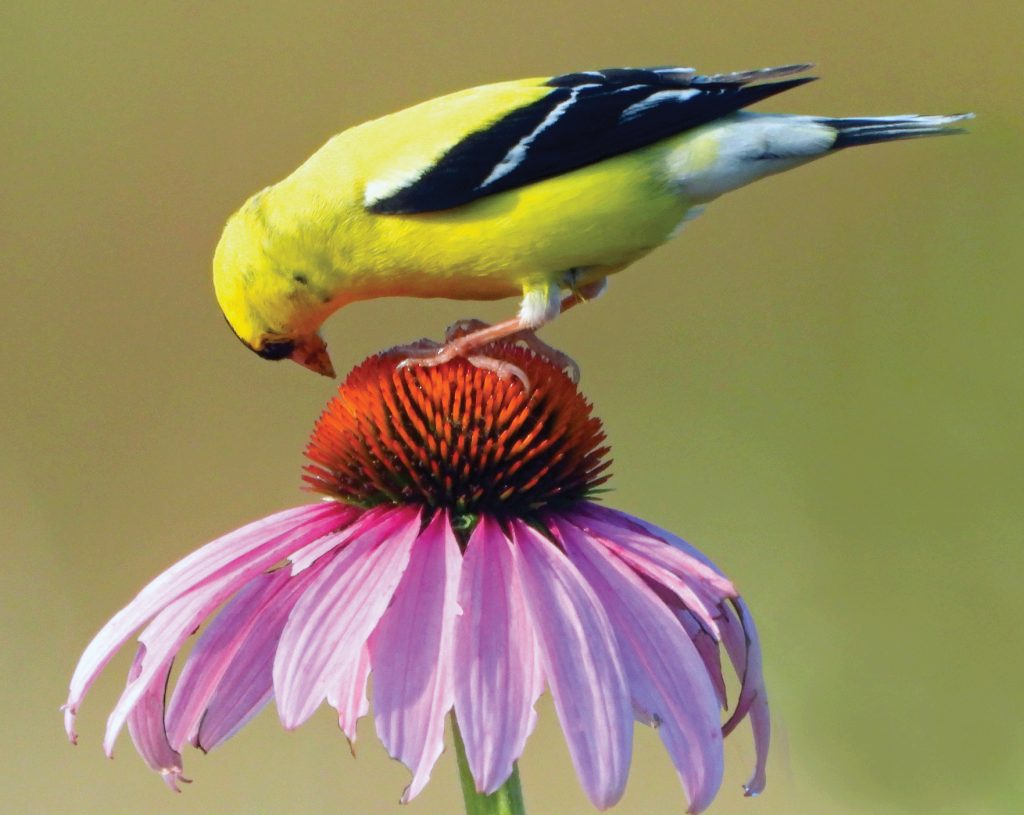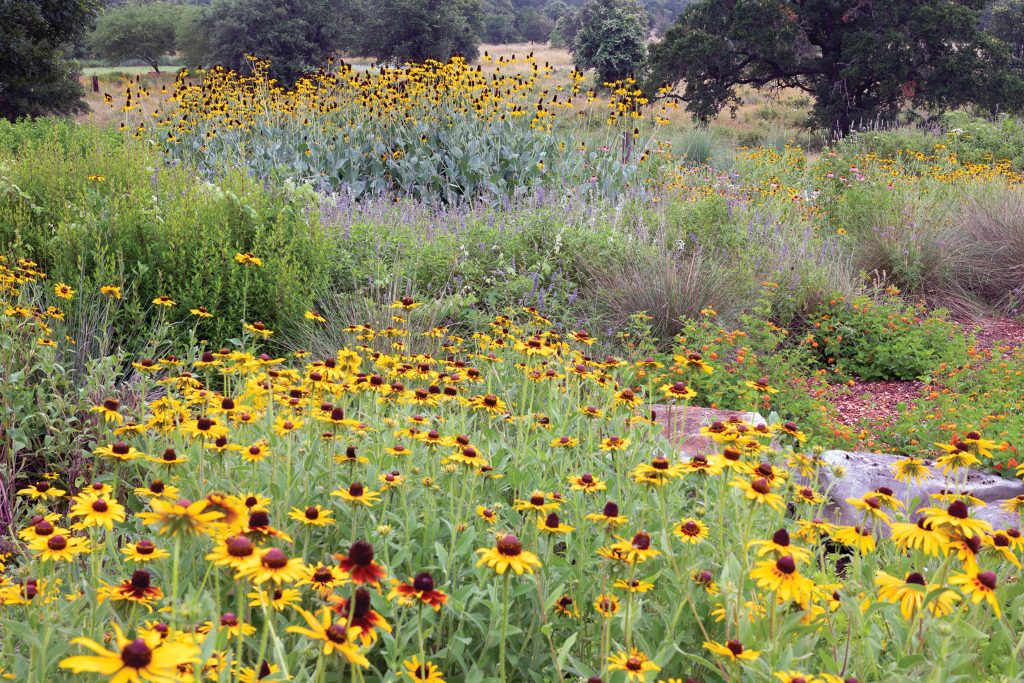
By Katie Jackson
Anyone who gardens, or even putters in the yard, knows that the simple act of gardening provides many benefits – fresh air, exercise, stress relief and access to fresh foods to name a few. But they may not realize those simple acts can also help save the world, especially the wild world. Entomologist and conservationist Doug Tallamy has been exploring and explaining those connections for more than three decades in his job as a University of Delaware professor and researcher. His work, which includes studying issues such as the impact of native versus nonnative plants on interconnected wildlife species (caterpillars and chickadees, for example), led Tallamy to write Bringing Nature Home: How You Can Sustain Wildlife with Native Plants.
This award-winning book focuses on the whys and hows of gardening for nature and, since its publication in 2007, has made Tallamy a guru in the growing movement toward more nature- and wildlife-friendly gardening. And that movement has never been so important as it is today.
“We are in a global wildlife extinction crisis,” says naturalist and media star David Mizejewski, spokesperson for the National Wildlife Federation’s Garden for Wildlife program and author of the popular how-to book Attracting Birds, Butterflies, and Other Backyard Wildlife.
“More than a million wildlife species worldwide are endangered,” he says. “In the U.S. alone, some 12,000 animal species are experiencing rapid population declines and one-third of all native wildlife species are at an increased risk of extinction in the coming decade.”

Among these species are beloved yard and garden visitors such as birds and butterflies as well native bee species, which play essential roles in crop pollination. These statistics are disturbing not just because they represent the loss of irreplaceable wildlife populations but also their dilemma may be a harbinger for the future of humankind, which also relies on healthy ecosystems.
Humans are also connected to nature cognitively, says Michelle Bertelsen, an ecologist with the Lady Bird Johnson Wildlife Center in Texas. “We have evolved and learned to think by interacting with the natural world forever and ever and ever,” she says. “That doesn’t stop just because we may live in cities.” And it is a connection many humans have come to appreciate during the past two years of the global COVID-19 pandemic.

“People have sought solace in nature during these tough times,” Mizejewski says, and many found it in their own yards, especially at the peak of COVID-19 shutdowns and stay-at-home orders.
While concerns about and connections to nature are increasing, they are also a source of frustration. “Everybody on the planet requires healthy ecosystems,” Tallamy says. But, he addd, when faced with stark statistics about the decline of wildlife and ecosystems “most people feel absolutely powerless. The Earth is huge and what can one person do?”
A lot, agree Tallamy, Mizejewski and Bertelsen, and it all begins in the landscapes that surround us.
“How we choose to manage and care for our own piece of earth is a powerful way to help out these declining populations,” Mizejewski says. “Sure, what we do in our backyards is not going to save polar bears, but it can make a huge difference for the rapidly declining Monarch butterflies and the birds and wild bee species that really need our help.”
“There is a central role that Joe Public can play because Joe Public owns the country,” Tallamy adds, explaining that while public parks, preserves and wilderness areas provide vital habitat for wildlife, they alone cannot save these species. However, on the 78 percent of U.S. land that is privately owned, wildlife-friendly management can have huge impacts on these animals and the overall health of the planet.

That kind of impact can occur anywhere and on any piece of land, from large rural fields to medium-sized suburban yards to tiny urban greenspaces. According to Bertelsen, studies have shown that putting small strips of pollinator habitat between rows or on the edges of agricultural land can greatly benefit pollinators, which in turn benefits the crops. The same can happen in our yards.
“It’s amazing how much impact a small pollinator garden can have,” Bertelsen says. “Even tiny islands (of wildlife-friendly real estate) in cities can help these species out so much. A little bit really does go a long way.” And when numerous people in the same vicinity and eventually across the globe provide wildlife habitats, such as pollinator gardens, the impact grows exponentially.
So what exactly is a wildlife-friendly landscape? According to Tallamy, it’s a landscape that contributes four components to the local ecosystem: it supports a diverse population of pollinators, supports the greater food web, sequesters carbon and protects and manages watersheds. And many of these functions, says Mizejewski, can be accomplished by providing wildlife with four basic needs: food, cover, places to raise young, and water.




